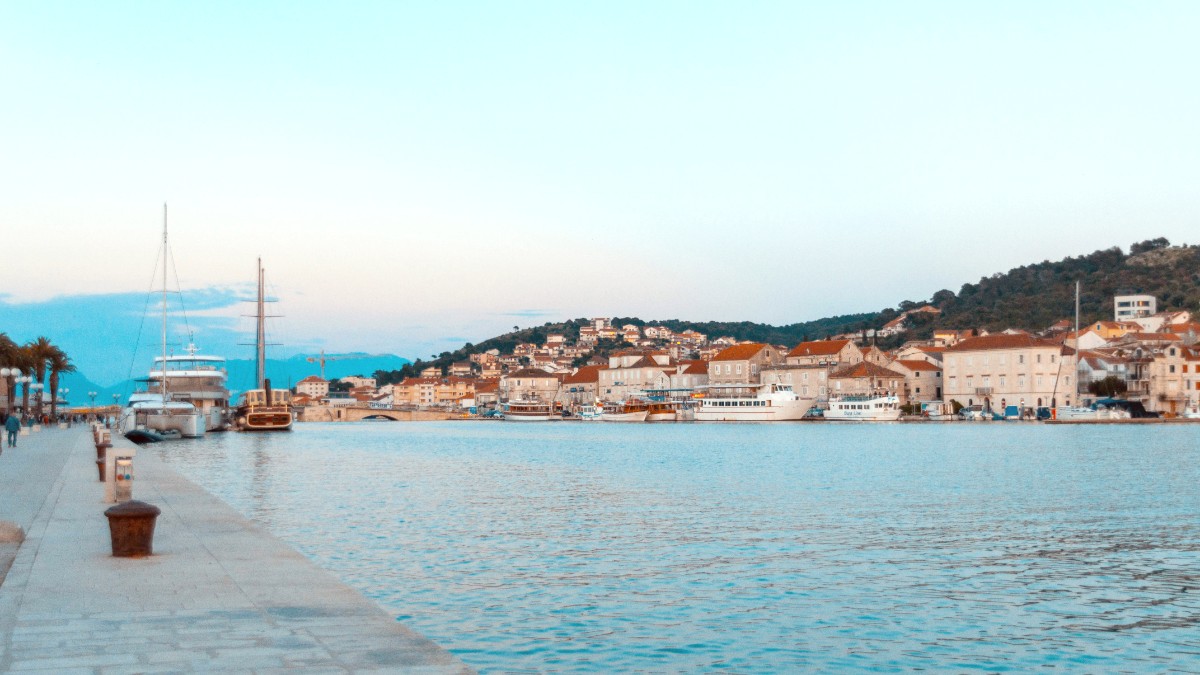
Dalmatia, Croatia
Dalmatian cuisine is Mediterranean. Fresh seafood, high-quality olive oil, vegetables, and aromatic herbs are characteristic. Strong influences come from Italian (Venetian) and Ottoman culinary traditions. Fresh, seasonal ingredients, simply prepared, are the focus. This reflects a deep connection to the land and sea.
Olive oil is a staple. Garlic, rosemary, sage, bay leaf, and parsley are common herbs. Fish and seafood dominate the menu (squid, octopus, white fish). Lamb, prepared "under the bell" (peka), also sees popularity. Dalmatian pršut (prosciutto) and local cheeses, like paški sir, are common appetizers. Fresh vegetables feature prominently.
A cornerstone of Dalmatian cooking, used generously in preparation and as a finishing touch for nearly every dish.
Garlic, rosemary, sage, bay leaf, and parsley impart a distinct Mediterranean aroma to meals.
A flavorful, slow-cooked beef stew. Beef is marinated, then slow-cooked until tender. Traditionally served with homemade gnocchi. Find this festive dish in traditional konobas.
A true taste of Dalmatian tradition.
Meat (lamb or octopus) or fish and vegetables cooked under a bell-shaped lid, covered with hot embers. Slow, even cooking results in incredibly tender, flavorful food. Peka requires 1-2 hours advance ordering. Find it at traditional konobas.
A unique and beloved cooking method.
Distinctive risotto colored and flavored with squid ink. Often contains other seafood. A rich, savory taste of the sea. Available at most seafood restaurants.
A bold, oceanic flavor.
Ćevapi: Grilled minced meat sausages in flatbread (lepinja) with raw onions and ajvar. A popular, affordable quick meal. Burek: Flaky, savory pastry with various fillings (meat, cheese, spinach). Find at bakeries. Sardines: Often grilled, served simply at local markets.
Rakija: Strong fruit brandy (šljivovica, travarica, lozovača). Local Wines: Plavac Mali (red), Pošip, Malvazija (white). Prošek: Sweet dessert wine. Beer: Karlovačko, Ožujsko. Kava: Strong espresso, a daily ritual.
Trogir presents a few upscale restaurants. Refined Dalmatian and international cuisine. Beautiful settings often feature sea or Old Town views. Seek out Tragos or high-end hotel restaurants on Čiovo.
Numerous konobas (taverns) and restaurants. Good balance of quality, atmosphere, and price. Traditional Dalmatian dishes, fresh seafood, and grilled meats. Pizzerias are popular and affordable. Fast food stalls present quick meals.
Trogir Market and Fish Market for fresh produce and daily catch. International cuisine options are limited.
Konobas (taverns) are for an authentic Dalmatian meal. They typically serve traditional dishes in a rustic, inviting atmosphere.
Many are family-run, with recipes passed down through generations.
For Peka, always call ahead. It needs time to prepare (1-2 hours minimum), and some konobas only make it by reservation.
The experience is worth the planning!
Dine in charming, narrow streets.
Enjoy views of yachts and the sea.
Restaurants with panoramic island scenery.
Peaceful dining spots away from crowds.
Communicate clearly and politely with restaurant staff about specific dietary needs. This is the best approach.
A translation card is a helpful tool.
Use online search tools and apps like HappyCow for vegan/vegetarian options. These can guide your choices.
Look for naturally compliant dishes like grilled meats/fish or risotto (check for thickeners).
For severe allergies, confirm preparation methods. Some smaller kitchens may have limited ability to fully prevent cross-contamination.
When uncertain, choose restaurants that focus on fresh, simple preparations rather than complex sauces. This often reduces hidden ingredients.
Some local agencies or guesthouses in Trogir or nearby Split host Dalmatian cooking classes. Focus is on traditional dishes. Learn local recipes and techniques.
Often combine historical walks with tastings of local specialties. Cultural and culinary insights are present.
Opportunities to visit olive groves or vineyards nearby. Many visits include tastings of olive oil, wine, and other local products. A direct connection to Dalmatian ingredients is present.
Ask restaurant owners or market vendors for recommendations. They often share insights into local specialties.
Local insights are invaluable for finding genuine flavors.
The Trogir Tourist Board website or local signs indicate upcoming culinary events or festivals during your visit.
Seasonal events showcase the freshest ingredients.
Meals are for enjoyment, not rushing. Service may reflect this laid-back attitude.
Rounding up the bill or 5-10% for good service is standard. Tipping is a gesture of appreciation.
Bread is usually served. It pairs well with olive oil or for soaking up delicious sauces.
Exploring Trogir's food scene goes beyond just eating; it is a cultural experience.